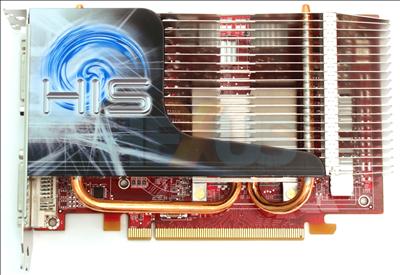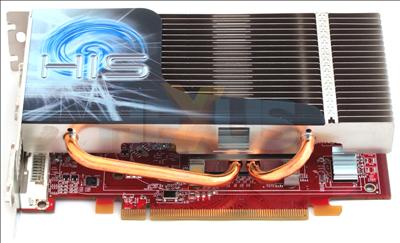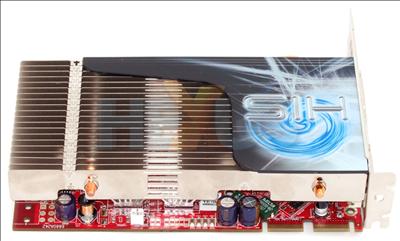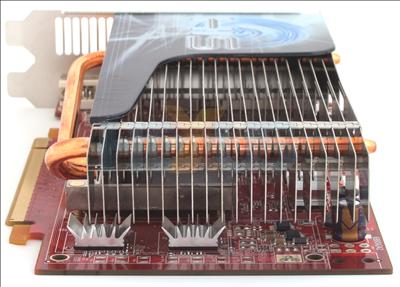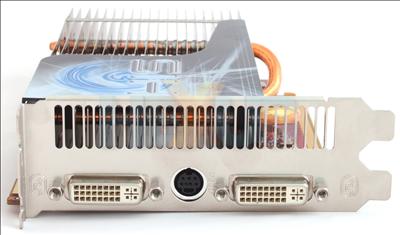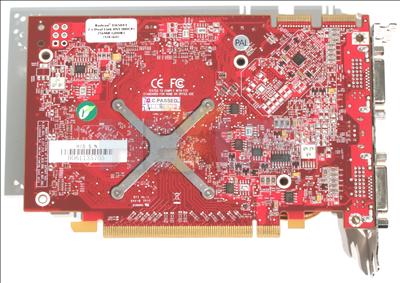HIS X1650 XT iSilence II 256MiB appearance
The first of our passively-cooled triumvirate is the HIS Radeon X1650XT iSilence II 256MiB. It's also available as a 512MiB model, by the way.
A word or two about the GPU first. The Radeon X1650 XT GPU isn't simply a faster-clocked version of the X1650 Pro, which, frankly, is a rebadged X1600 XT. Rather, the X1650 XT possesses an 8/8/8 (VS/PS/ROP) setup, and with 3 shaders per PS, a total of 24 fragment processors. It also boasts internal CrossFire - a la X1950 Pro - and HDCP-enabled outputs, driven through dual-link DVI. In short, it has high-end underpinnings that are only compromised by a 128-bit memory bus.
It's soon to be replaced by a DX10 HD-series card, but, for now, it's still selling well.
HIS clocks its X1650XT at reference speeds, meaning 574MHz core and 1350MHz GDDR3 memory. Midrange Radeon GPUs run a little warmer than their NVIDIA counterparts, so HIS has added in a large, single-sided aluminium heatsink that's augmented by the use of dual heatpipes.
The heatpipes serve to effectively push the heat transferred from the GPU to the heatsink's fins, and you can see how they're bonded together. The large surface area is enough to keep X1650 XT ticking along nicely, and we're not in the least bit surprised that HIS hasn't decided to pre-overclock its iSilence II further.
The cooling takes up the full width of the card. You can also see the CrossFire connectors on this side.
We weren't able to monitor the GPU temperature on the board, due to the software not correctly interfacing with the sensor. It's a problem we've seen on previous X1650 XT retail SKUs from ASUS and HIS. Being passively cooled we'd hope this issue is fixed soon.
A couple of things to note here. The first is the use of RAMSinks to keep the 256MiB GDDR3 memory chips cool. We reckon they're present for aesthetic reasons as much as for their practical benefit - 1350MHz-rated GDDR3 doesn't run that warm.
Silence comes with a spatial cost, however. The oversized heatsink turns the iSilence II into a double-height card. CrossFire, then, may not be an option open to some folks with poorly-designed motherboards, and the card will not fit into smaller SFF units that only have room for a single-slot PCIe card.
The rear is, well, bland: all the action is on the front.






